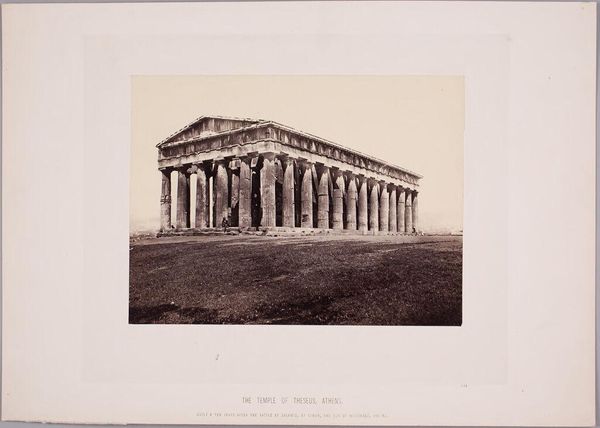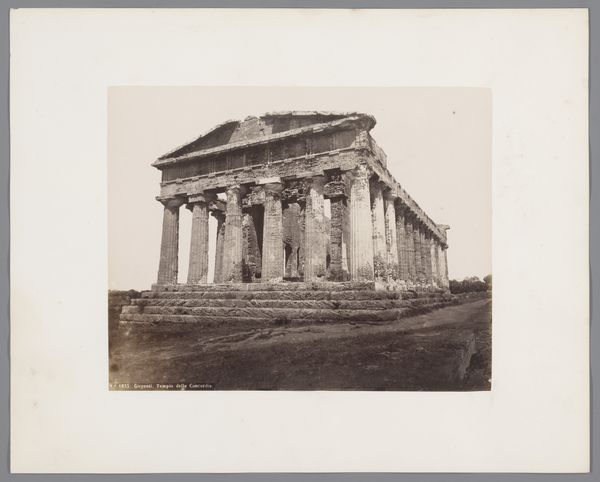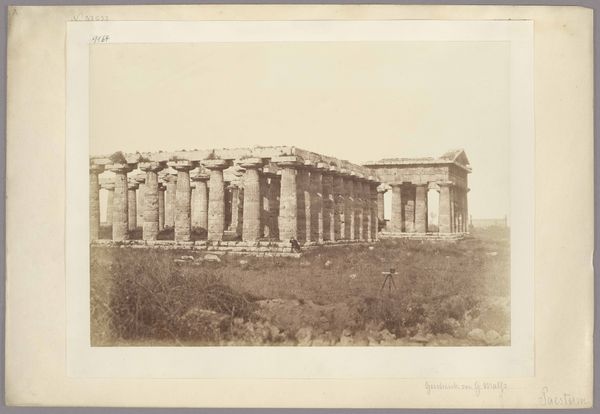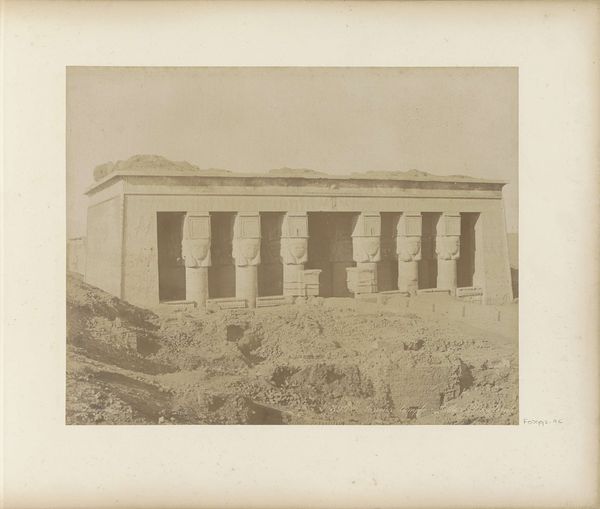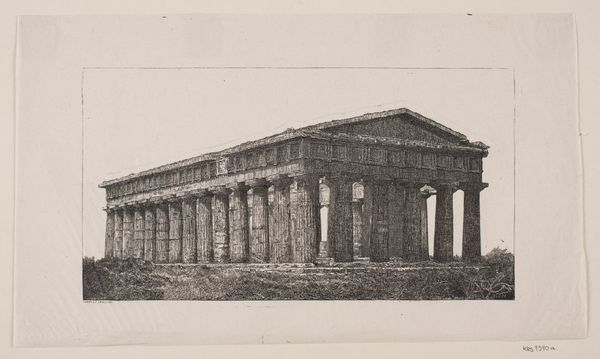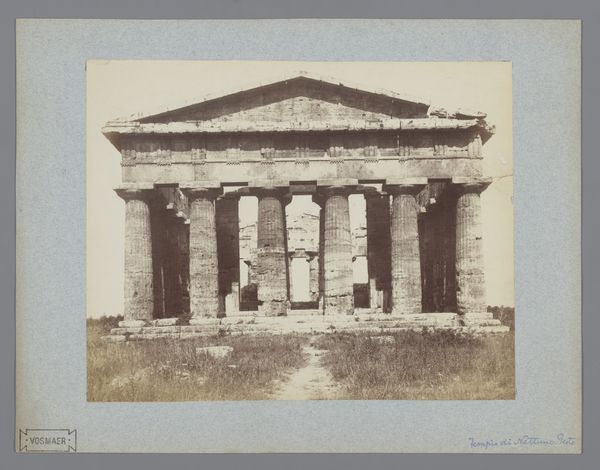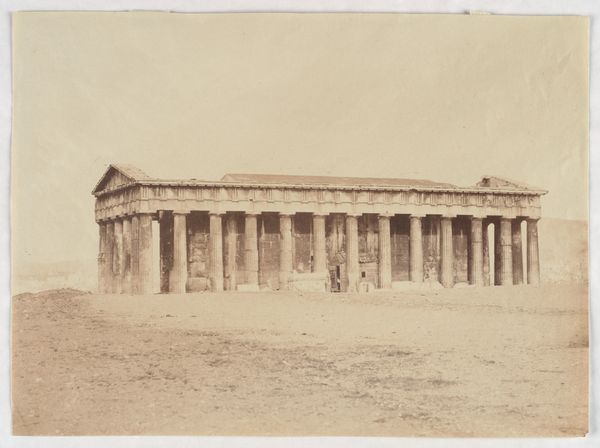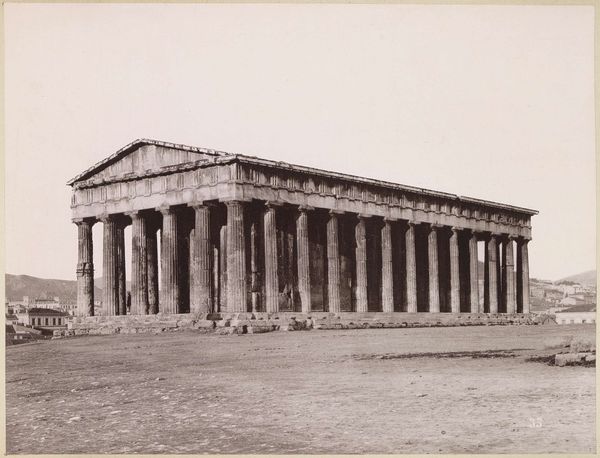
print, photography
# print
#
landscape
#
classical-realism
#
photography
#
ancient-mediterranean
#
cityscape
Dimensions: height 172 mm, width 220 mm, height 239 mm, width 294 mm
Copyright: Rijks Museum: Open Domain
Giorgio Sommer made this albumen print of the Temple of Juno at Paestum, in Italy, sometime in the mid-19th century. The photograph captures the temple's imposing structure, reflecting a fascination with classical antiquity that permeated 19th-century European culture. Sommer was part of a burgeoning tourist industry that catered to European elites eager to experience the historical sites of Italy. Photography played a crucial role in this phenomenon, providing easily reproducible images that fueled the desire for travel and the collection of cultural artifacts. Sommer's photographs, sold as souvenirs, not only documented these sites but also framed them within a narrative of European cultural heritage. The institutional context of this image is important. Museums and educational institutions like the Rijksmuseum, by collecting and displaying such photographs, reinforce the value of these classical sites within a broader historical and cultural narrative. By examining travel accounts, museum records, and the history of photography, we can better understand the complex interplay between tourism, cultural preservation, and the construction of European identity in the 19th century.
Comments
No comments
Be the first to comment and join the conversation on the ultimate creative platform.
